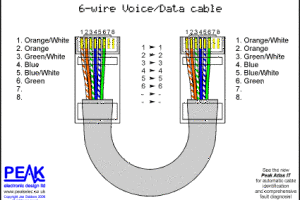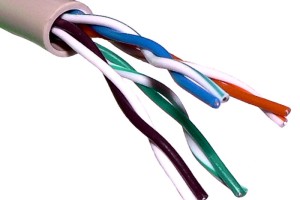How is an Ethernet LAN cabled?
If you work at an office or business that uses an LAN (Local Area Network) you may understand the way such networking functions to connect you to your colleagues and help you do your job. However, depending on your level of tech-savvyness, you may have less knowledge about the mechanics of such networks and how they work in a physical sense. The Ethernet LAN was conceived and invented in the 70s, and by the late 80s most businesses employed some form of ethernet networking. Originally, ethernet had several competing networking types: Token Bus and Token Ring, but won out quickly due mostly to the adaptability and convenience of the cabling systems involved.
Initially ethernet networks ran over coaxial cabling. Coaxial cabling is a somewhat complex system made of copper and plastic. In basic terms, there is a central core, which is the main conductor of energy and information, that for all intents and purposes is a copper wire. This is surrounded by an insulator incased in a braided metal shield, generally also made of copper. The entire cable is encased in a plastic tubing jacket to protect the current. Its main uses, besides LANs include radio frequency transmissions and television cable. Because the current of a coaxial cable moves between the outer metal shield and the core it is safe and functional to install near other metal systems such as plumbing and electric wiring without fear of signal erosion or interference. These cables, however, have some major flaws that caused them to eventually be replaced in ethernet LAN systems. No matter how well constructed the metal shielding of a coaxial cable, there is room for signal leakage, which in simple terms is like when two radio stations blur, fuzz and play at the same time, which is not only irritating, but keeps you from listening effectively to either. Because the braided shield has gaps there is a greater likelihood of electromagnetic leakage of this kind, which in an office using ethernet, could bring business to a screeching halt.
As Ethernet systems became standardized, the switch was made to Twisted Pair cabling. Originally invented by Alexander Graham Bell for telephone networking, this form of cabling has gone through many evolutions and has many applications. The very basic make up of a Twisted Pair cable is when a balanced pair – two wires carrying opposite and equal signals across a distance- are twisted together to reduce interference between the two. The destination insertion differentiates between the signals and reduces the kind of electromagnetic radiation that can exist with coaxial cables. Inside a single physical cable there can be several different internal twisted pairs, allowing for more complicated and reliable bandwidth and clearer communication. The wiring is often color coded for the sake of clarity. You may hear or see these twisted pair cables referred to as Cat3, Cat4, Cat5, Cat5e, Cat6, Cat6a, ClassF and ClassFa. They are all different generations of the same basic cabling that allows information to be shared over LANs. These cables transmit the information needed to accomplish business tasks in most offices.




